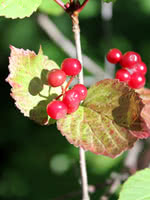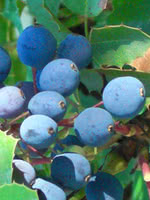Mon-Fri 9am - 5pm Mountain time
Lowbush Cranberry vs Creeping Oregon Grape
Viburnum edule
Mahonia repens
NOT AVAILABLE THIS SEASON - MIGHT RETURN
CUSTOM GROW
Lowbush Cranberry is a short, deciduous shrub native to North America. Its white flowers bear sour but edible fruit that ripens to a brilliant red in fall. Lowbush Cranberry's small size makes it suitable for urban use; buyers will also find it useful if trying to reclaim land back to its original species or when landscaping with native species in damp conditions.
Creeping Oregon Grape is an excellent ground cover plant with attractive, dark green, holly-like leaves. It maintains its leaves throughout winter, which turn mauve, rose, and rust-colored. Clusters of bright, yellow flowers develop into dark, blue-purple edible berries ideal for juice or wine.

